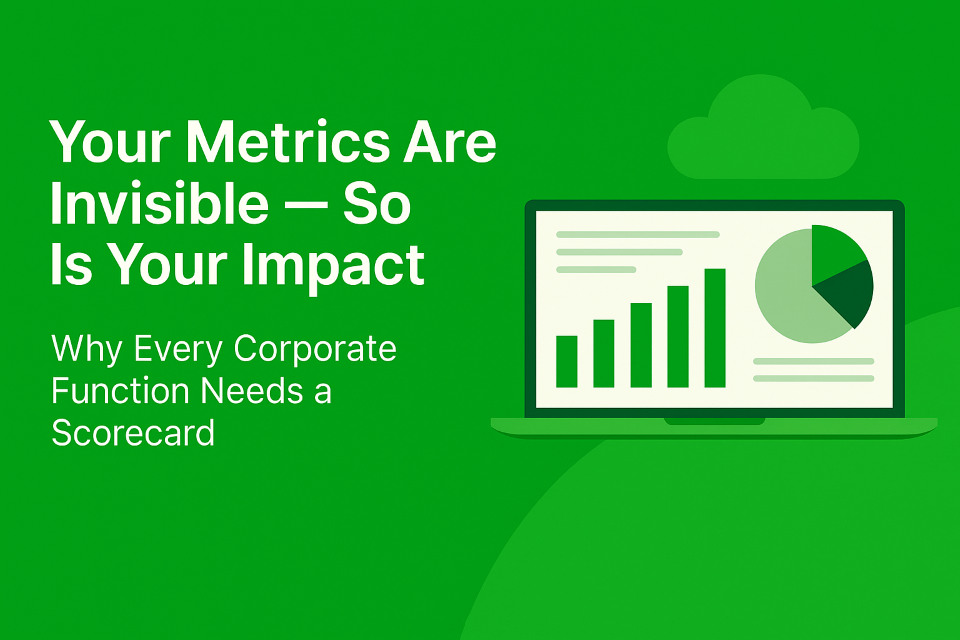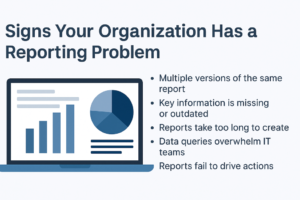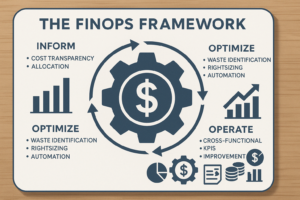If Your Metrics are invisible, so is your impact
In high-performing organizations, data isn’t just a tool—it’s a language. But in many corporate functions like HR, Legal, Risk, Compliance, and Finance, data remains scattered, disconnected, or misunderstood. Executives demand evidence of impact, yet reporting remains reactive, siloed, and spreadsheet-driven.
If you can’t measure it, you can’t manage it. And if you can’t manage it, you can’t improve it.
That’s where performance scorecards come in.
Why Scorecards Are Important for Corporate Functions
Unlike revenue-generating teams, corporate functions often struggle to quantify their value. You don’t sell products—you manage people, risk, compliance, and continuity. But that doesn’t mean you can’t show performance.
A scorecard provides a structured, visual way to:
- Monitor performance with agreed-upon KPIs
- Communicate progress to leadership
- Align day-to-day activities with strategic goals
- Build trust in the function’s impact and maturity
Scorecards turn your function’s story into a measurable, credible, and strategic narrative.
Common Pitfalls in Defining a Good Scorecard
Designing a scorecard sounds simple—but many organizations fall into traps that dilute its effectiveness. Here are the most common:
- Inconsistent KPI definitions → Different teams measure the same concept differently (e.g., “policy compliance” or “attrition”).
- Overloaded dashboards → Too many metrics, not enough context or prioritization.
- Disconnected from strategy → Activities tracked, but not linked to enterprise OKRs.
- No automation → Data is manually entered or refreshed monthly—often after it’s needed.
- Lack of ownership → No one is responsible for curating, updating, or evolving the scorecard.
- No pathway to action → The scorecard tracks information but doesn’t lead to decisions
The Scorecard as a Solution
When done right, a scorecard acts as a decision enabler—not just a reporting tool. It brings clarity, consistency, and direction across departments.
Here’s how different functions can use them:
|
Department |
Scorecard Focus |
|
HR |
Attrition trends, time-to-hire, internal mobility, DEI metrics |
|
Finance |
Forecast accuracy, budget variance, cost-center accountability |
|
Legal |
Case volume, resolution time, contract backlog |
|
Compliance |
Policy renewal rates, unresolved issues, training completion |
|
Internal Audit |
Audit cycle time, overdue findings, risk themes |
|
Risk |
Emerging risks, mitigation progress, heatmaps by business unit |
|
Communications |
Internal engagement, message effectiveness, feedback loops |
Each scorecard is tailored to its team’s objectives but built on a common framework—making it easier to roll up into executive and enterprise reporting.
Key Considerations for Effective Scorecards
To evolve your scorecard into a high-impact BI dashboard, keep these principles in mind:
- Start with the question, not the data. What are leaders trying to decide? What story are you trying to tell?
- Limit to what matters. Don’t track everything—track what drives action.
- Use thresholds and trends. Don’t just show today’s value. Show movement and targets.
- Embed governance. Define each KPI clearly. Assign owners. Control access.
- Make it visual. Use clean layouts, sparing color, and interactive filters.
- Design for the user. A dashboard for a CHRO will look different from one for an HRBP.
A great scorecard is more than a static report—it’s a living tool that evolves with your function
From Department Scorecards to Enterprise Alignment
Building scorecards at the department level is the first step toward enterprise performance management. They create the foundation for:
- Cross-functional KPI alignment
- Organization-wide OKR tracking
- Executive performance reviews
- Risk-informed decision-making
- AI-enhanced forecasting and diagnostics
Think of each department scorecard as a building block. When aligned and connected, they form a true organizational scorecard—a powerful tool for strategic execution and agility.
It’s Time to Lead with Data, Not Defend with Slides
Your team is doing meaningful work.
Now it’s time to make it visible, measurable, and strategic.
At ClarityWork, we help corporate leaders move from fragmented reports to high-trust, high-impact scorecards—powered by aligned KPIs, governed data, and elegant dashboard design.
Whether you’re starting from spreadsheets or looking to scale enterprise reporting, we’ll help you build a reporting system your team and your leadership can trust.
📌 Ready to stop reporting and start influencing?
👉 [Book a Scorecard Discovery Session]
👉 [Download the ClarityWork Scorecard Framework PDF]





